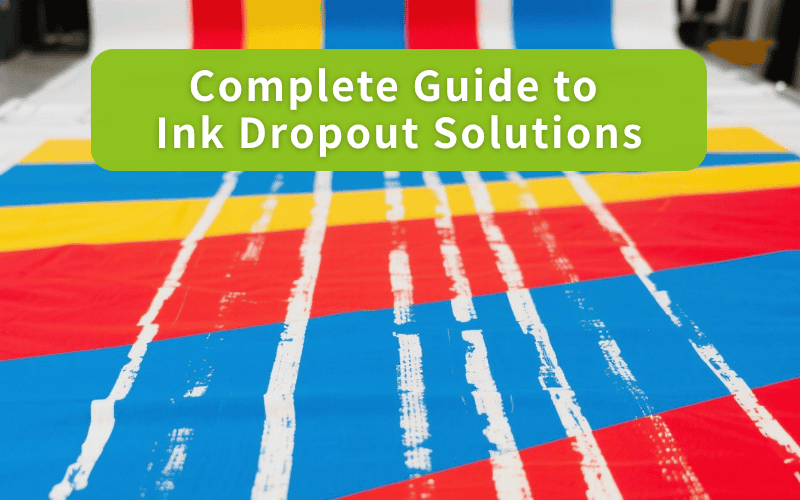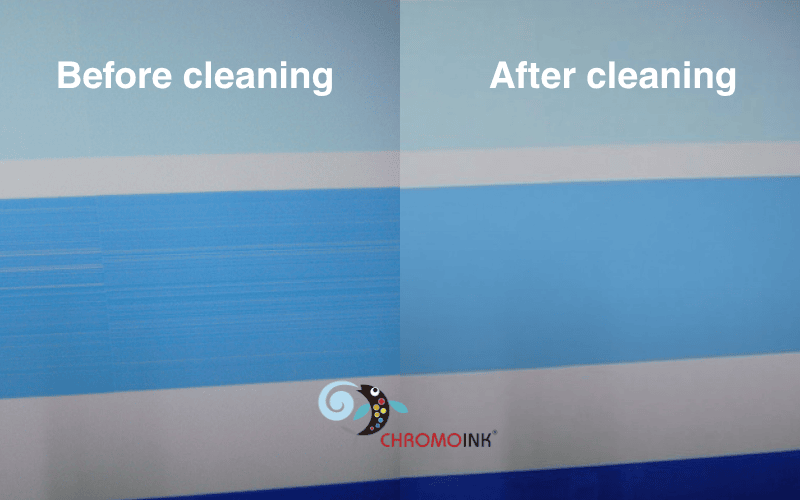

Ink dropout is one of the most frequent—and frustrating—issues in digital inkjet printing. When the ink doesn’t eject properly, it can lead to banding, missing colors, or even a completely ruined print. The main causes can be divided into four categories:
Ink viscosity that is too high or too low, pigment settling, or incompatibility with printhead materials.
Clogged nozzles, unstable ink bag pressure, or poor sealing in the ink supply lines.
Low temperatures reduce ink fluidity, or unstable humidity levels causing static interference.
Surface energy, porosity, and chemical properties of different substrates directly affect ink adhesion.
For example, polypropylene (PP) has a surface energy of only about 29 dyn/cm, while most water-based inks have a surface tension of around 35–45 dyn/cm. This mismatch can cause “false ink dropout.”
Regularly clean printheads and ink supply lines; check ink bags and valves.
Choose inks compatible with printhead materials and maintain proper viscosity and particle stability.
Maintain stable temperature and humidity, prevent dust contamination, and ensure smooth ink delivery.
Set up daily test routines to avoid operator-induced issues.
Select inks based on substrate properties, and when necessary, apply surface treatments (corona, flame, or coating) to improve adhesion and ink flow.
Printhead Type | Common Ink Dropout Issues | Solutions |
|---|---|---|
| Scale buildup in nozzles from prolonged high temperatures. Improper inks crystallizing. | ✔ Regular nozzle cleaning, immediate cleaning when clogs occur. ✔ Use heat-resistant, stable inks to prevent impurities or crystallization. ✔ Maintain stable temperature and humidity to prevent nozzle drying. ✔ Keep spare printheads to avoid full downtime. | |
| Large particles or high-viscosity inks building up. Nozzles drying out when not in use. Piezoelectric film damage causing unstable jetting. Microbubbles forming during ejection and blocking nozzles. | ✔ Use stable inks and keep the ink path clean to prevent impurities. ✔ Perform “moisture preservation” maintenance when the machine is idle; seal ink tanks and maintain minimal operation. ✔ Use “ink purge/air release” procedures to remove bubbles from the ink path. |
Thermal printheads require inks with strong heat resistance and anti-foaming properties, typically water-based dye or pigment ink.
Piezo printheads demand stable viscosity and chemical compatibility, making them suitable for LED UV curing ink, Eco Solvent Inkjet Ink, Dye Sublimation Inks Textile, and other industrial-grade inks. With regular maintenance, proper environmental control, and professional ink formulations, dropout risks can be significantly reduced.
Clean the printhead, replace ink, adjust temperature/humidity, or recalibrate printhead parameters.
Use professionally formulated inks designed for compatibility with your printhead technology and compliant with international environmental and green printing standards. Establish standardized operating procedures and maintenance plans to minimize dropout risks and boost overall production efficiency.
One client using a piezo printhead with Eco Solvent Inkjet Ink experienced continuous ink dropout. After inspection, the cause was identified as a clogged printhead. We advised the client to follow this process:

After completing the cleaning procedure, the client successfully resumed printing, with dropout issues fully resolved and print quality restored.
Ink dropout is common, but with proper control over ink quality, equipment maintenance, and printhead compatibility, print stability can be greatly improved. By combining professional ink formulations with technical processes, you can achieve both short-term printing success and long-term production stability—while lowering maintenance costs.